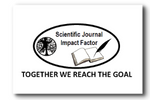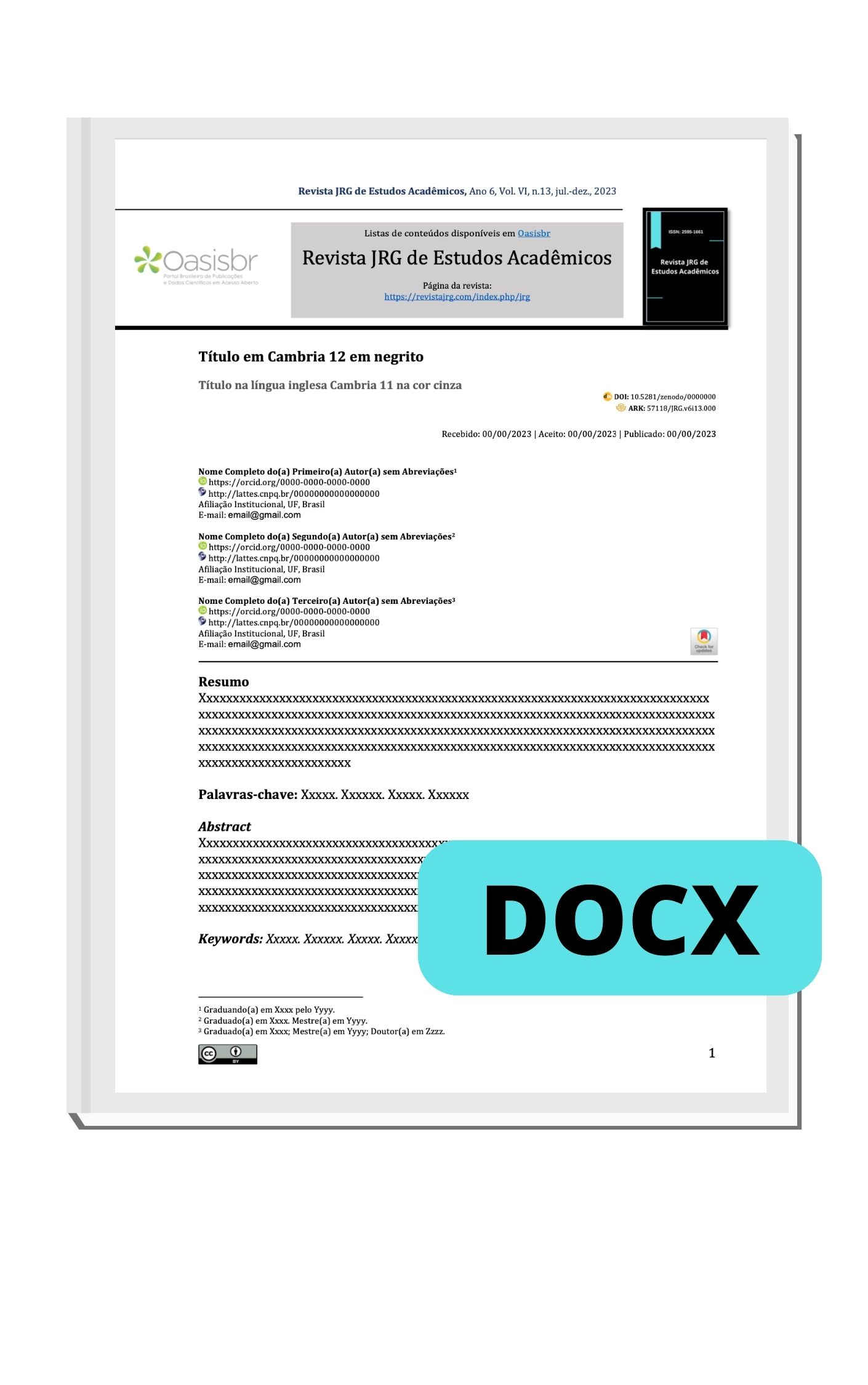Obesity, sedentary lifestyle and poor diet as risk factors for type 2 diabetes in young people: a literature review
DOI:
https://doi.org/10.55892/jrg.v7i15.1707Keywords:
Type 2 Diabetes Mellitus, Young People, Sedentary, Unhealthy Eating Habits and ObesityAbstract
Type 2 Diabetes Mellitus (T2DM) is a chronic metabolic disease characterized by hyperglycemia resulting from dysfunctions in insulin production or action. Although previously rare among young individuals, the incidence of T2DM in this age group has been increasing alarmingly, driven by changes in dietary habits and physical inactivity, particularly in developed and developing countries. This article aimed to review the relationship between obesity, sedentary behavior, and unhealthy eating habits as risk factors for the development of T2DM in young people. The integrative review included 26 studies published between 2020 and 2024 in databases such as Google Scholar, Biblioteca Nacional de Saúde (BVS), Scientific Electronic Library Online (SciELO), and the National Library of Medicine (PubMed). The findings revealed that sedentary behavior, exacerbated by excessive use of electronic devices and the lack of infrastructure for physical activities, is a major risk factor. Furthermore, the high consumption of ultra-processed foods rich in sugars and saturated fats worsens obesity, often associated with insulin resistance. Adolescents from low-income backgrounds were identified as particularly vulnerable due to barriers in accessing healthy foods and opportunities for physical exercise. Conversely, studies indicated that diets rich in fiber, vegetables, and whole grains, combined with regular physical activity, significantly reduce the risk of T2DM. In conclusion, the rise of T2DM among young individuals results from interactions between behavioral, socioeconomic, and environmental factors. Public policies that promote access to healthy food, encourage physical activity, and educate the population about the risks of sedentary lifestyles and poor dietary habits are crucial to curbing this growing trend.
Downloads
References
ARAÚJO, A. L. S.; MAGALHÃES, R. D. S.; FERREIRA, L. S. Impacto do diagnóstico precoce da diabetes mellitus tipo ii na adolescência e predisposição. Revista Liberum accessum, v. 15, n. 2, p. 17-30, 2023.
ARROCHA, M. F. et al. Factores de riesgo para la diabetes mellitus tipo 2 en adolescentes de un consultorio médico. Revista de Enfermedades no Transmisibles Finlay, v. 12, n. 1, p. 12-20, 2022.
BONSEMBIANTE L.; TARGHER G.; MAFFEIS C. Type 2 Diabetes and Dietary Carbohydrate Intake of Adolescents and Young Adults: What Is the Impact of Different Choices?. Nutrients. 2021;13(10):3344. Published 2021 Sep 24. doi:10.3390/nu13103344
BJORNSTAD, P. et al. “Youth-onset type 2 diabetes mellitus: an urgent challenge.” Nature reviews. Nephrology vol. 19,3 (2023): 168-184. doi:10.1038/s41581-022-00645-1
CAICEDO, A. J. C.; BRAVO, J. E. G.; ZAMBRANO, W. N. G. La obesidad como factor de riesgo en la diabetes mellitus tipo 2 en jóvenes de 12-19 años. Polo del Conocimiento: Revista científico-profesional, v. 6, n. 3, p. 1417-1433, 2021.
CORREIA, R. S. et al. Epidemiological survey of risk factors for the development of type 2 Diabetes Mellitus in UFDPAR students and its correlation with isolation policies during the COVID-19 pandemic. Research, Society and Development, [S. l.], v. 13, n. 5, p. e5913545719, 2024. DOI: 10.33448/rsd-v13i5.45719. Disponível em: https://rsdjournal.org/index.php/rsd/article/view/45719. Acesso em: 28 nov. 2024.
FALUN-GUZMAN, D. J. et al. Clinical presentation and treatment of type 2 diabetes in young adults in a Colombian hospital. Acta Med Colomb, Bogotá, v. 46, n. 3, p. 19-24, 2021. https://doi.org/10.36104/amc.2021.1902.
FELIPE, G. B. C.; ALVES, L. T.; MANRIQUE, E. J. C. Avaliação dos hábitos de vida e o risco de desenvolvimento de diabetes mellitus tipo 2 em uma universidade de goiás. Revista Ciência Plural, [S. l.], v. 10, n. 2, p. 1–21, 2024. DOI: 10.21680/2446-7286.2024v10n2ID35424. Disponível em: https://periodicos.ufrn.br/rcp/article/view/35424. Acesso em: 7 nov. 2024.
FERREIRA, A. C. G. R. et al. Diabetes Mellitus tipo 2: incidência e seus impactos biopsicossociais na infância / Type 2 diabetes mellitus: incidence and its biopsychosocial impacts in childhood. Brazilian Journal of Health Review, [S. l.], v. 4, n. 2, p. 7502–7510, 2021. DOI: 10.34119/bjhrv4n2-291.
FERREIRA-LIMA, W. et al. Fatores de risco associados a hiperglicemia: estudantes de 11 a 16 anos em Paranavaí-Brasil e Cáceres-Espanha. Cadernos Saúde Coletiva, v. 30, n. 1, p. 44-55, 2022. https://doi.org/10.1590/1414-462X202230010303
GAONA, N. et al. Prevalencia de síndrome metabólico en adolescentes escolarizados del Departamento Central en el año 2021. Pediatría (Asunción), v. 49, n. 3, p. 142-153, 2022.
GIROLDO, J. C.; GABRIEL, A. L. Diabetes mellitus tipo 2: a intervenção da atividade física como forma de auxílio e qualidade de vida. Revista Carioca de Educação Física, v. 15, n. 1, p. 28-39, 2020.
KELSEY, M. M. et al. “The Impact of Obesity On Insulin Sensitivity and Secretion During Pubertal Progression: A Longitudinal Study.” The Journal of clinical endocrinology and metabolism vol. 105,5 (2020): e2061–e2068. doi:10.1210/clinem/dgaa043
JACOMINI, C. P. et al. A prevalência de internações hospitalares por diabetes mellitus no brasil entre 2020 e 2023. REVISTA FOCO, [S. l.], v. 16, n. 9, p. e2615, 2023. DOI: 10.54751/revistafoco.v16n9-002. Disponível em: https://ojs.focopublicacoes.com.br/foco/article/view/2615. Acesso em: 30 out. 2024.
LOPES, C, et al. O aumento do número de casos da diabetes mellitus tipo 2 em crianças e adolescentes e a prevalência da obesidade: uma revisão bibliográfica. In: Congresso Médico Acadêmico UniFOA. 2023.
MUZY, J. et al. Prevalência de diabetes mellitus e suas complicações e caracterização das lacunas na atenção à saúde a partir da triangulação de pesquisas. Cadernos de saúde pública, vol. 37,5 e00076120, 2021. https://doi.org/10.1590/0102-311X00076120
Page, M. J., Moher, D., Bossuyt, P. M., Boutron, I., Hoffmann, T. C., Mulrow, C. D., & McKenzie, J. E. PRISMA 2020 explanation and elaboration: updated guidance and exemplars for reporting systematic reviews. bmj, 372. 2021.
PULUNGAN, A. B.; AFIFA, I. T.; ANNISA, D. Type 2 diabetes mellitus in children and adolescent: an Indonesian perspective. Annals of Pediatric Endocrinology & Metabolism, v. 23, n. 3, p. 119-125, 2018. doi:10.6065/apem.2018.23.3.119
RAÍNHO, C. et al. Diabetes mellitus tipo 2 em idade pediátrica. Revista Portuguesa de Medicina Geral e Familiar, [S. l.], v. 37, n. 2, p. 163–9, 2021. DOI: 10.32385/rpmgf.v37i2.12296. Disponível em: https://rpmgf.pt/ojs/index.php/rpmgf/article/view/12296. Acesso em: 2 dez. 2024.
Rodacki M. et al. Classificação do diabetes. Diretriz Oficial da Sociedade Brasileira de Diabetes (2023). DOI: 10.29327/557753.2022-1, ISBN: 978-85-5722-906-8.
SALAS-GONZÁLEZ, M. D. et al. Factores nutricionales relacionados con la resistencia a la insulina en escolares y adolescentes. Nutrición Hospitalaria, v. 40, n. SPE2, p. 51-54, 2023. https://dx.doi.org/10.20960/nh.04956.
SCANDIFFIO, J. A.; JANSSEN, I. Do adolescent sedentary behavior levels predict type 2 diabetes risk in adulthood? BMC Public Health, v. 21, n. 1, p. 969, 2021. DOI: 10.1186/s12889-021-10948-w.
SILVA, P. et al. Mudanças no estilo de vida em crianças e adolescentes reduzem os riscos do desenvolvimento de diabetes mellitus tipo II. Brazilian Journal of Implantology and Health Sciences , [S. l.], v. 5, n. 5, p. 3451–3466, 2023. DOI: 10.36557/2674-8169.2023v5n5p3451-3466. Disponível em: https://bjihs.emnuvens.com.br/bjihs/article/view/875. Acesso em: 10 nov. 2024.
STRATI, M. et al. (2024). Early onset type 2 diabetes mellitus: an update. Endocrine, 85(3):965-978, 2024. doi:10.1007/s12020-024-03772-w.
TITMUSS, A. et al. “Youth-onset Type 2 Diabetes: An Overview of Pathophysiology, Prognosis, Prevention and Management.” Current diabetes reports vol. 24,8:183-195, 2024. doi:10.1007/s11892-024-01546-2
VALADARES, Y. et al. Avaliação de fatores de risco para diabetes mellitus tipo 2 entre estudantes da universidade estadual do sudoeste da Bahia- BA. ENCICLOPEDIA BIOSFERA, [S. l.], v. 18, n. 37, 2021. Disponível em: https://www.conhecer.org.br/ojs/index.php/biosfera/article/view/5304. Acesso em: 2 dez. 2024.









































